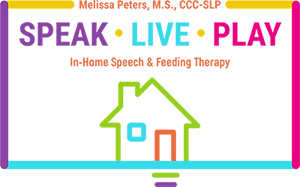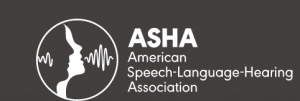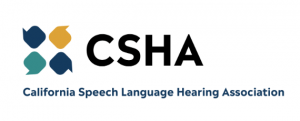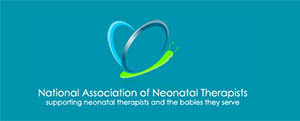AAC for adult patients
Communication plays a crucial role in our daily lives, allowing us to convey emotions, build connections, learn, and make decisions. When faced with a complete or partial loss of voice, feelings of fear, isolation, and frustration can arise. Unfortunately, conditions like traumatic brain injury, stroke, and cancer can lead to speech disorders. Augmentative and Alternative Communication (AAC) offers a solution, empowering individuals with speech challenges.
AAC represents an alternative communication method that facilitates social engagement and expression of thoughts without relying on traditional speech mechanisms like tongue and lips movements. Speak Live Play is dedicated to providing specialized speech and language services, focusing on AAC for adults. Our team of experienced speech-language therapists offers a range of AAC options tailored to each patient’s specific needs.
What is AAC for adult patients?
Augmentative and alternative communication (AAC) is a term that denotes communication methods that assist individuals that are unable to use verbal speech to communicate. AAC encompasses various nonverbal communication, including picture boards, sign language, mobile device apps, and dedicated speech-generating devices. Speech-Language pathologists also use various augmentative communication that helps bridge the gap between bringing the words in the individual brain out for others to hear.
The main advantages of the AAC techniques and devices are that they allow the individual to say and play with words. By doing so, the learners can learn new words, allowing them to communicate effectively. With these devices, the patients can enjoy full and productive lives, enabling them to communicate whenever they want.
What Disorders can AAC can help?
Apraxia of speech
AOS is a neurological disorder that causes the inability to say the words they want to say correctly. The individual usually knows what to say but cannot control the muscles that help form the words. This includes the jaws, lips, and tongue muscles. AAC systems assist patients suffering from AOS, helping them increase their participation in daily activities.
Dysarthria
Dysarthria is a mild form of apraxia, which makes the speech choppy or slurred. AAC techniques and devices play a crucial role in helping an individual to have more control over communication, decreasing frustration.
Spasmodic dysphonia
Spasmodic dysphonia causes involuntary movements of the vocal cords as you speak. The condition results from abnormal brain functioning. AAC allows individuals to use facial expressions, communication aids, and sign language to express their idea.
Vocal disturbances
Vocal disturbances result from various injuries, activities, and other disorders such as throat cancer, polyp growth, and ingestion of antidepressants. Additionally, overexploiting your voice can also lead to a hoarse voice. Most often, the voice needs rest to resolve these disorders. AAC can help the person to communicate effectively before his/her voice gets better.
What is AAC for adult patients Speech Therapy?
Unfortunately, most skilled recovery facilities and rehabilitation centers do not offer AAC for their patients. Others misguidedly believe that AAC can impede the goal for a person regaining the ability to speak. Speak Live Play therapists understand the importance of integrating the AAC system into your treatment program. As mentioned, various AAC exists with an aim to helping patients with speech disorders to communicate better.

Speak Live Play therapists usually perform a detailed evaluation to test how well the patient can understand and speak. After this, the professional will help find the right AAC system that works best for the patient. As the patient improves their communication skills, their needs change. The therapist will periodically recommend the changes to the alternative communication methods. Below are the primary types of AAC.
Types of AAC
If you or your loved one has a problem speaking, the following types of AAC may help. The main types of AAC include the aided system and unaided systems. Depending on the speech disorder, an individual may use one or both options.
Unaided Systems
The unaided AAC system involves using gestures, facial expressions, body language, and sign vocabulary to communicate. The therapist will teach you how to use these nonverbal communication options, allowing you to communicate with your friends and family.
Aided Systems
Aided AAC systems involve using devices or tools. The aided systems come in two different forms; basic and high tech. Basic aided systems make use of simple tools such as a pen and paper. The individual will point to letters, pictures, or words to communicate what they need. AAC board is the most common basic system used in both homes and hospitals.
The board will enable the patient to communicate with their caregivers and their nurses while in the hospital. Computers and speech generating devices are a part of high tech devices. The main advantages of these devices are that they enable individuals to play with words and even speak in different languages.
The advantages of AAC for adult patients
The primary aim of Speak Live Play is to aid patients in regaining their ability to speak fluently and communicate clearly. This objective remains consistent across all cases, although outcomes may vary depending on the severity and type of impairment. The therapist takes into account multiple factors when designing a therapy regimen and selecting AAC options for each patient. They tailor the program to each individual case, recognizing the unique needs and circumstances of every patient.
Complete Loss of Voice
Every individual needs to express their needs, ask questions, share feelings, build relationships, and make decisions. Unfortunately, traumatic brain damages, cancer, and other mental damages can lead to a complete loss of voice. The AAC offers an alternative way to communicate, helping them regain their control, independence, and sense of self. AAC will help the individual keep interacting, allowing them to stay engaged with their friends and family.
Temporary Loss of Voice
Sometimes, brain damages can make the person lose the ability to speak, but through therapy and other treatment, the person can relearn how to speak. The process takes time and effort. As such, AAC makes a great alternative to allow the person to express him/herself before they can begin speaking. While the AAC does not deliver as effective communication as speaking, it helps the person nurture the connection with family and friends, make decisions, and ask questions. Here, AAC is only temporary, and the individual can stop using the digital voice once speech is restored.
Occasional Language Reinforcement
Speech functions may not disappear completely but can be disrupted by stroke and brain injury. This may make the person with the ability to think but may not speak coherently. For instance, people with apraxia or dysarthria may not speak clearly. AAC is a great option to help the person to speak clearly.
Why Speak Live Play?
Loss of speech is devastating; the ability to express your thoughts, make decisions, and ask questions is unimaginable. Nevertheless, this does not mean the end. Speak Live Play is a reliable resource of trained speech-language pathologists who will help you communicate with your family and friends. Patients suffering from speech and swallowing problems require specialized attention. With intensively trained therapists experienced with AAC at your disposal, Speak Live Play is capable of handling all your speech disorders. Contact us today and let us be a part of your recovery!
Sources
- https://blog.mycoughdrop.com/aacforadults/#:~:text=AAC%20empowers%20adults%20who%20need,language%20reinforcement%20in%20certain%20situations.
- https://www.amyspeechlanguagetherapy.com/communication-boards.html
- https://www.augcominc.com/userfiles/file/Adults_with_Acquired_Final_CM.pdf
- https://www.asha.org/public/speech/disorders/aac/





